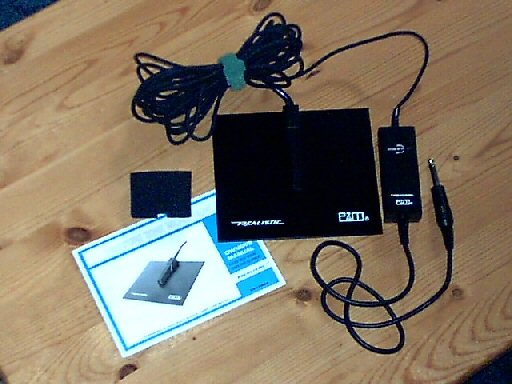AUDIO FACTS AND TIPS

Sound is a pattern of pressure waves that move through the air. The frequency of these waves determines the pitch of the sound--how low or high it sounds. Sound frequency is measured in cycles per second or Hertz (Hz). The range of human hearing is generally considered to be from about 20Hz at the low end and 20 kHz at the high end. But in practice, most adults only hear as high as 12kHz to 19kHz (especially if you've spent lots of time with loud headphones or at loud rock concerts).
Microphones turn
small variations in air pressure into electrical signals. Air waves
hitting a sensitive diaphragm inside the mic are translated
into electrical energy. Selecting the right mic and placing it to pick
up a signal optimally are key.
Condenser mics need a small amount of voltage (between 9 and 48 volts) to function. If you use a condenser mic, make sure that it has its own internal battery — or that you have a preamp or mixer equipped with phantom power.

Sony handheld, stereo, condenser microphone connects to camera with MINI connector

Lavalier condenser microphone w/Professional XLR connector

Lavalier condenser microphone w/Professional XLR connector
Tends to accent the middle of the frequency spectrum .

Handheld dynamic microphone uses professional XLR connector
These have now been developed to the point where they can rival true capacitor quality for a much lower price. Instead of applying an electrical charge to the microphone capsule via an external power source, electret mics use a diaphragm made from an insulating material that has a permanent electrical charge. A preamplifier is still needed, but this can be built very cheaply, and will run from a battery in some cases.
PZM--Pressure
Zone Microphone
Special type of condenser microphone. Also known as a boundary microphone,
this type of microphone uses a sound phenomena called the boundary effect.
PZM mics are quite unusual-looking. They are flat and don't really look like
microphones at all. They work best when placed against a hard, flat surface
at least one meter square; for example, a tabletop or wall.
These mics are often used in conference situations, where they can be placed
conveniently and unobtrusively in the middle of the table.
A
small condenser microphone is mounted face-down a short distance from
the reflective boundary plate. This creates a pressure zone between
the plate and the mic. The microphone detects changes in this pressure
zone, rather than the conventional method of detecting changes in the
surrounding air pressure (i.e. sound waves).
Advantages of PZM Microphones
The main advantage of this technology is the elimination of interference from
reflected sound waves. A normal microphone will pick up sound waves from the
primary source and also any reverberations, which can result in unnatural sound
reproduction. In the pressure zone microphone, sound waves are always in phase
and there is no interference.
PZM mics also tend to have a smooth frequency response, good off-axis consistency
and strong output levels.







